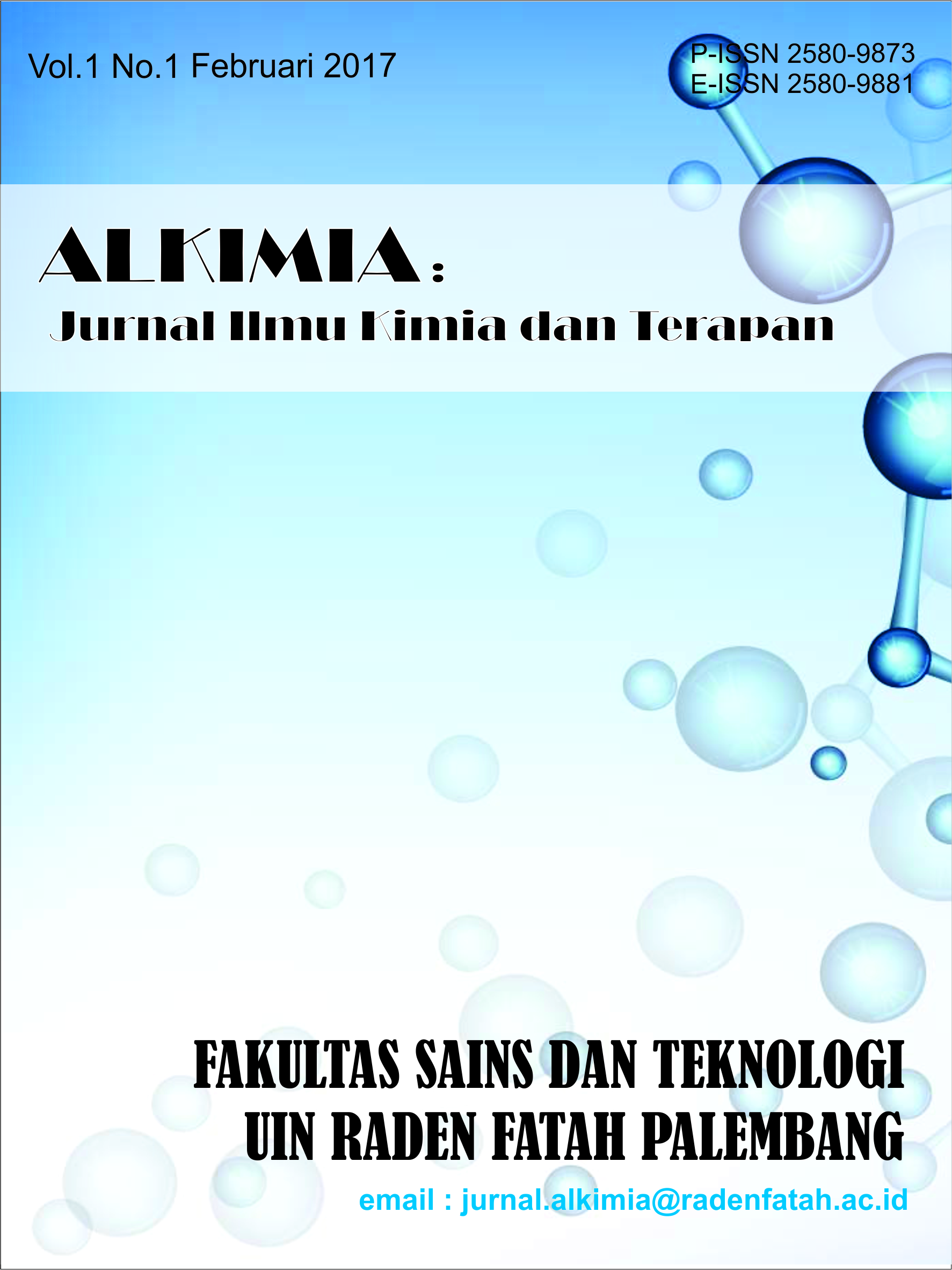Analysis of Oil and Fat Content in Palm Oil Industry Wastewater Gravimetric Analysis
Main Article Content
Abstract
Article Details

This work is licensed under a Creative Commons Attribution-ShareAlike 4.0 International License.
- The author saves the copyright and gives the journal simultaneously with the license under Creative Commons Attribution License which permits other people to share the work by stating that it is firstly published in this journal.
- The author can post their work in an institutional repository or publish it in a book by by stating that it is firstly published in this journal.
- The author is allowed to post their work online (for instance, in an institutional repository or their own website) before and during the process of delivery. (see Open Access Effect).
How to Cite
References
V. Gunarathne et al., “Environmental pitfalls and associated human health risks and ecological impacts from landfill leachate contaminants: Current evidence, recommended interventions and future directions,” Sci. Total Environ., vol. 912, no. November 2023, p. 169026, 2024, doi: 10.1016/j.scitotenv.2023.169026.
K. H. Hama Aziz, F. S. Mustafa, K. M. Omer, S. Hama, R. F. Hamarawf, and K. O. Rahman, “Heavy metal pollution in the aquatic environment: efficient and low-cost removal approaches to eliminate their toxicity: a review,” RSC Adv., vol. 13, no. 26, pp. 17595–17610, 2023, doi: 10.1039/d3ra00723e.
D. Izzati Azkiya Dzil, Analisis Dampak Teknologi Modern Terhadap Masalah Lingkungan. Semarang: Alinea Media Dipantara, 2022.
L. H. S. Putro, “Emissions of CH4 and CO2 from wastewater of palm oil mills: A real contribution to increase the greenhouse gas and its potential as renewable energy sources,” Environ. Nat. Resour. J., vol. 20, no. 1, pp. 61–72, 2022, doi: 10.32526/ENNRJ/20/202100149.
E. P. Sari, B. Wasita, and M. Muthmainah, “Potential of avocado oil (Persea americana) in improving triglyceride and High Density Lipoprotein (HDL) levels in rats (Rattus novergicus) model of dyslipidaemia due to high fat diet,” J. Gizi dan Diet. Indones. (Indonesian J. Nutr. Diet., vol. 12, no. 4, p. 296, 2024, doi: 10.21927/ijnd.2024.12(4).296-305.
H. B. Jadhav and U. S. Annapure, “Triglycerides of medium-chain fatty acids: a concise review,” J. Food Sci. Technol., vol. 60, no. 8, pp. 2143–2152, 2023, doi: 10.1007/s13197-022-05499-w.
R. A. Simbolon, H. Halimatussakdiah, and U. Amna, “Uji Kandungan Senyawa Metabolit Sekunder pada Ekstrak Daun Jambu Biji (Psidium guajava L var. Pomifera) dari Kota Langsa, Aceh,” Quim. J. Kim. Sains dan Terap., vol. 3, no. 1, pp. 12–18, 2021, doi: 10.33059/jq.v3i1.3493.
N. Aryani, A. Harokan, and E. Gustina, “Analisis Kejadian Hipertensi Pada Lansia Di Puskesmas Sukarami Kecamatan Sungai Rotan Kabupaten Muara Enim,” J. Kesehat. Saelmakers Perdana, vol. 6, no. 2, pp. 323–330, 2023, doi: 10.32524/jksp.v6i2.999.
A. D. M. de Medeiros, C. J. G. da Silva Junior, J. D. P. de Amorim, I. J. B. Durval, A. F. de Santana Costa, and L. A. Sarubbo, “Oily Wastewater Treatment: Methods, Challenges, and Trends,” Processes, vol. 10, no. 4, pp. 1–20, 2022, doi: 10.3390/pr10040743.
T. Harmawan, “Analisis Kandungan Minyak dan Lemak pada Limbah Outlet Pabrik Kelapa Sawit di Aceh Tamiang,” Quim. J. Kim. Sains dan Terap., vol. 4, no. 1, pp. 15–19, 2022, doi: 10.33059/jq.v4i1.4318.
M. R. Sururi, M. Dirgawati, W. Wiliana, F. Fadlurrohman, Hardika, and N. Widiyati, “Performance evaluation of domestic waste water treatment system in urban Indonesia,” Case Stud. Chem. Environ. Eng., vol. 8, no. August, p. 100507, 2023, doi: 10.1016/j.cscee.2023.100507.
N. A. Fauzia, T. T. Anasstasia, and U. Hidayati2, “Penurunan Kadar Salinitas, Cod, Minyak Dan Lemak Pada Air Limbah Dengan Kombinasi Filtrasi-Adsorpsi (Studi Kasus: Air Limbah Retention Pond Pembangkit Listrik),” vol. 10, no. 2, pp. 17–23, 2023.
Y. N. Noviyanty, H. Herlina, and C. Fazihkun, “Identification And Determination Of Saponin Levels From Bidurrot Extract (Calotropis gigantea L) Using Gravimetry Method,” J. Pharm. Sci., vol. 3, no. 2, pp. 100–105, 2020, doi: 10.36490/journal-jps.com.v3i2.52.
A. Farhan, “Evaluasi Kualitas Air Limbah pada Inlet dan Outlet Instalasi Pengolahan Air Limbah (IPAL) Komunal Gampong Rukoh Kota Banda Aceh Sebagai Rekomendasi Sistem Pemeliharaan Berbasis Masyarakat,” Tesis, pp. 1–131, 2022.
D. U. Jannahdita, O. H. Cahyonugroho, P. Studi, T. Lingkungan, F. Teknik, and J. Timur, “Analisis Hubungan Jumlah Beban Pencemar Terhadap Kualitas Air Permukaan Menggunakan Perangkat Lunak SPSS 23,” vol. 2, no. 6, pp. 1082–1092, 2023, doi: 10.55123/insologi.v2i6.2831
